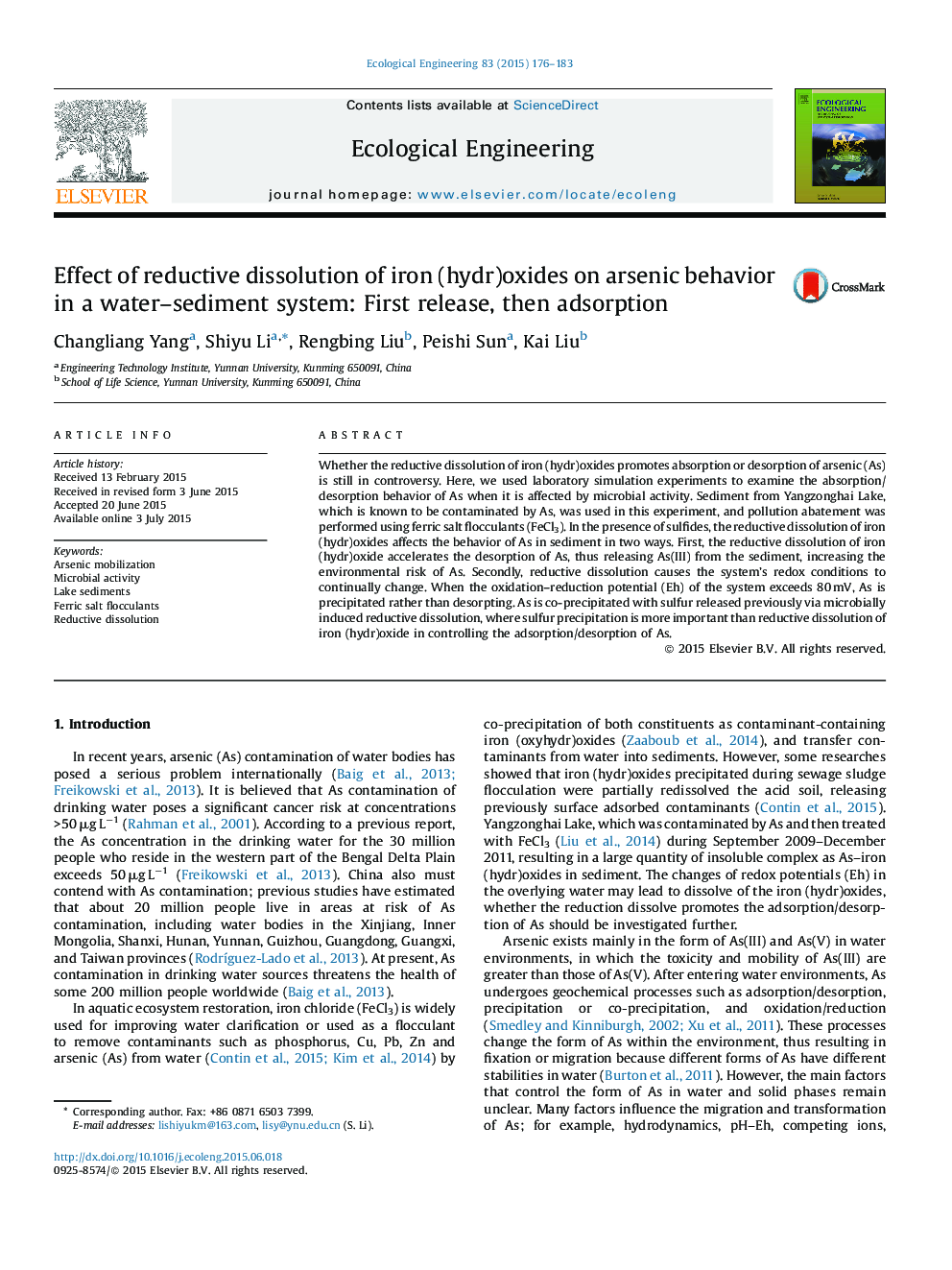| کد مقاله | کد نشریه | سال انتشار | مقاله انگلیسی | نسخه تمام متن |
|---|---|---|---|---|
| 4388864 | 1618016 | 2015 | 8 صفحه PDF | دانلود رایگان |
• Reductive dissolution of iron (hydr)oxides promotes As absorption.
• Redox conditions are the main factor impacting As absorption/desorption.
• As and S co-precipitation is an important mechanism of controlling As mobilization.
Whether the reductive dissolution of iron (hydr)oxides promotes absorption or desorption of arsenic (As) is still in controversy. Here, we used laboratory simulation experiments to examine the absorption/desorption behavior of As when it is affected by microbial activity. Sediment from Yangzonghai Lake, which is known to be contaminated by As, was used in this experiment, and pollution abatement was performed using ferric salt flocculants (FeCl3). In the presence of sulfides, the reductive dissolution of iron (hydr)oxides affects the behavior of As in sediment in two ways. First, the reductive dissolution of iron (hydr)oxide accelerates the desorption of As, thus releasing As(III) from the sediment, increasing the environmental risk of As. Secondly, reductive dissolution causes the system’s redox conditions to continually change. When the oxidation–reduction potential (Eh) of the system exceeds 80 mV, As is precipitated rather than desorpting. As is co-precipitated with sulfur released previously via microbially induced reductive dissolution, where sulfur precipitation is more important than reductive dissolution of iron (hydr)oxide in controlling the adsorption/desorption of As.
Figure optionsDownload as PowerPoint slide
Journal: Ecological Engineering - Volume 83, October 2015, Pages 176–183
